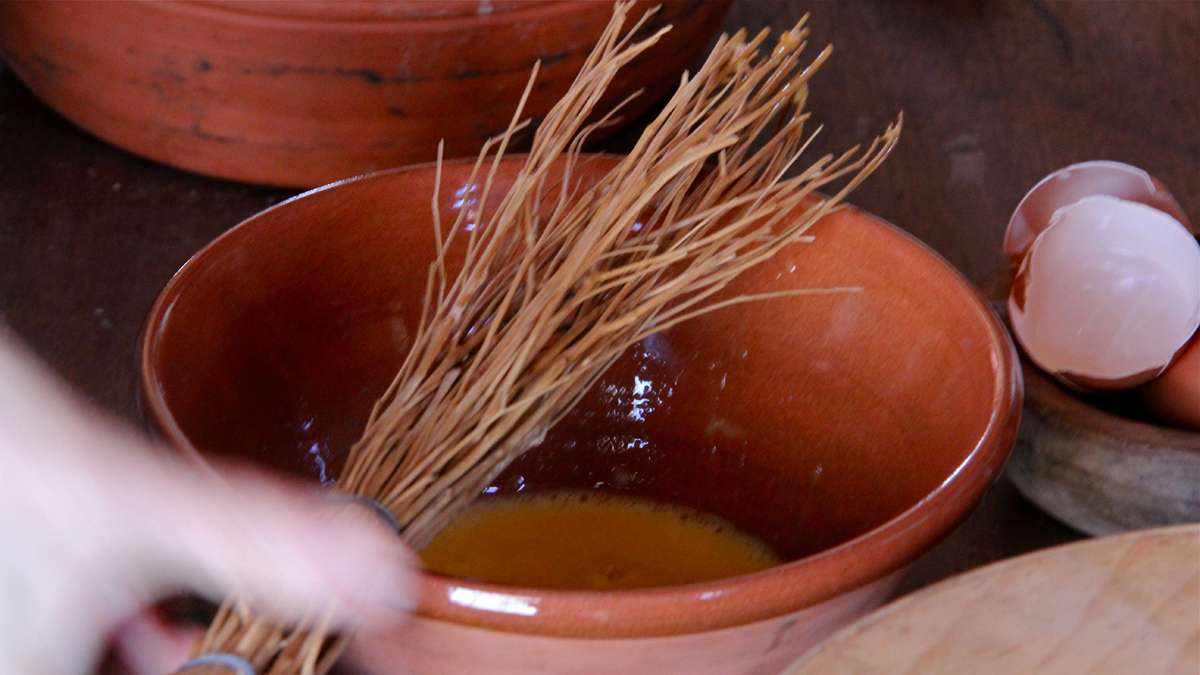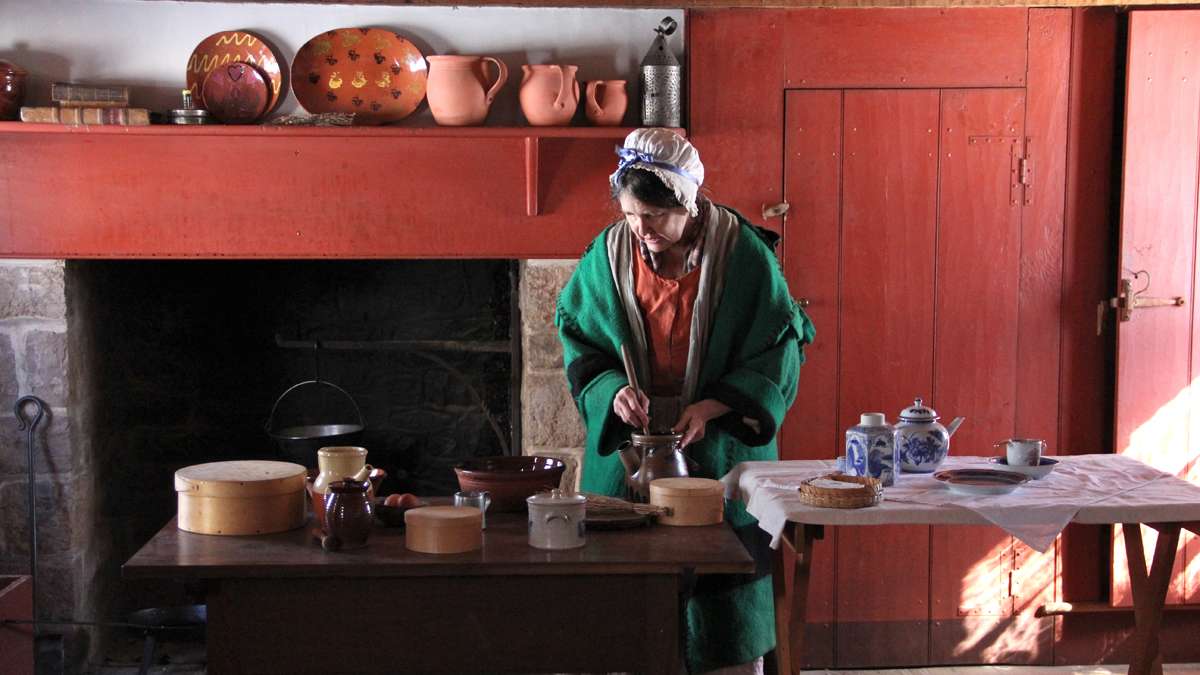Northern Liberties’ pre-Piazza roots on display at Philadelphia History Museum
-

-

George Washington liked his hoecakes drenched in honey and butter. (Emma Lee/for NewsWorks)
-

-

-

-

-

-

-

-

-

-

-

-

-

(Nathaniel Hamilton/NewsWorks Photo)
A longtime Northern Liberties resident has curated artifacts related to the neighborhood’s past in a new exhibit at the Philadelphia History Museum.
When the museum formerly known as Atwater Kent became the Philadelphia History Museum, it created a community room where area organizations could curate their own histories.
Artist and curator Jennifer Baker is not an organization. She is a longtime Northern Liberties resident with an even longer phone list. With the help of the Northern Liberties Neighborhood Association, she called everyone she knew and asked if they had any artifacts related to the neighborhood’s past.
She got a vinyl record, found buried underneath what is now Liberty Lands park, where there was once a record-pressing plant.
She got 10 wooden mallets discovered in somebody’s basement, and 100-year-old drawings of metal gates, sketched on the back of old envelopes, found in the notebook of an early 20th-century blacksmith.
She got rusty stovetop grates and bug sprayers that came from a place called Harry Shur’s Hardware Store.
“He was the king of nails, biggest nail dealer on the East Coast,” said Baker while installing the exhibition. “He owned 10 buildings that were all connected inside. When I first moved into the neighborhood, you’d walk in for a little box of nails. He would go rooting around through his buildings and come back with it. Whatever you wanted, he always had it. But it was always rusty.”
Rusty remains speak of gritty past
Inspired by galleries of the Barnes Foundation, Baker arranged the tools, hooks, grates, and wheels on the walls, punctuating the maps, photographs, and text blocks that explain Northern Liberties, pre-Piazza.
Baker arranged the artifacts to represent the dense, layered way Northern Liberties is built, with rowhomes and factories built cheek-to-jowl. One thing she could not bring into the gallery is the way the neighborhood smelled — once a major factor of living there.
The Burk Brothers Tannery had chemicals; Ortlieb’s brewery had fermenting hops; meat-packing plants had slaughterhouse effluvia. All the smells would waft between and around the rowhouses.
“It really smelled terrible,” said Joseph Ortlieb in a video interview included in the exhibition. In 1975, Ortlieb bought his family’s then-100-year-old brewery and gave the iconic regional beer a few more years until the inevitable.
“I bought the family out, and turned the brewery around,” said Ortlieb. “It was only a matter of time before the big guys swallowed the small guys.”
Schmidt’s bought Ortlieb’s, and ultimately shut it down. Harry Shur and his ramshackle hardware store on Second Street aren’t there anymore. Nor is the sprawling Burk tannery compound, or the meatpackers. By the 1980s, most of Northern Liberties’ major manufacturers were gone, leaving behind empty factories and warehouses.
Then came the fires
“I lived in American Street in the late ’80s and early ’90s, and that street started burning down around me,” said Baker, who still keeps an art studio in the neighborhood. “Over a period of four years, there were 14 fires.”
Those fires were a catalyst for Baker’s curiosity. A trained sculptor and painter, she began documenting abandoned factory fires on canvas. She curated this show to find out what happened to Northern Liberties before its most recent gentrification.
“The changes now, with all the real estate development — that’s kind of obvious why that’s happening,” said Baker. “But this earlier change, I was curious about why that happened, and how the economy of the country in manufacturing changed, and how patterns of where people work and live dramatically change. That neighborhood is a microcosm of that transformation.”
The history of Northern Liberties is on view with regular admission to the Philadelphia History Museum.
WHYY is your source for fact-based, in-depth journalism and information. As a nonprofit organization, we rely on financial support from readers like you. Please give today.





